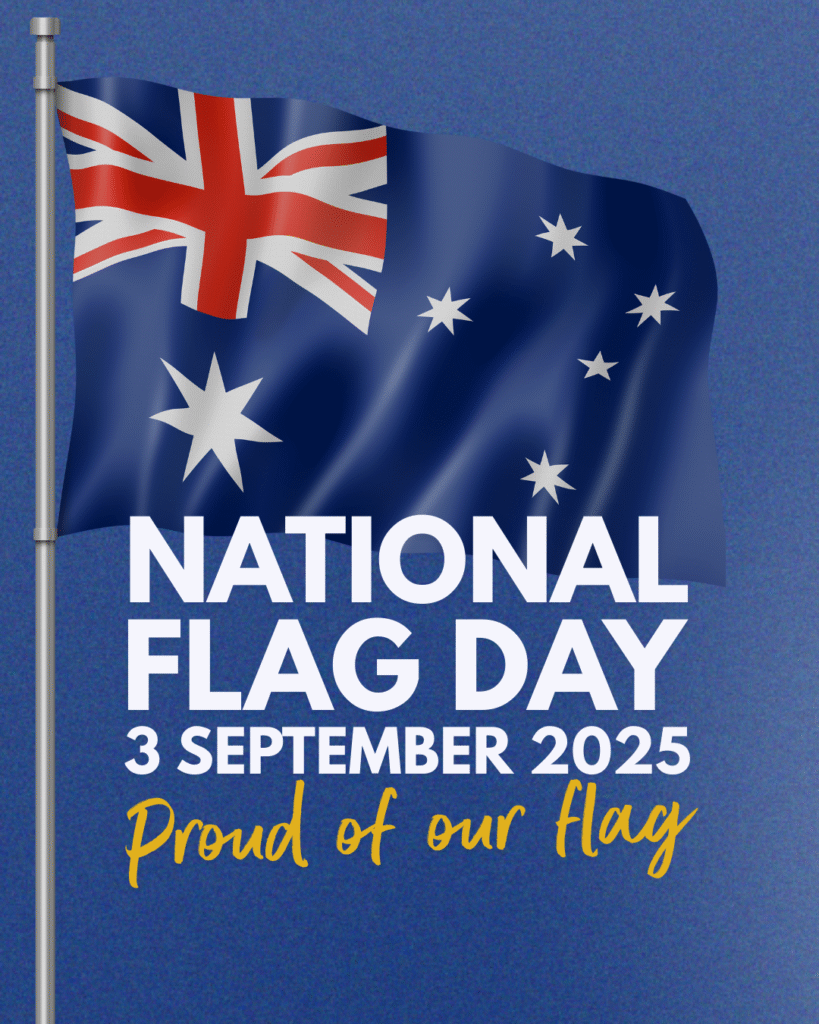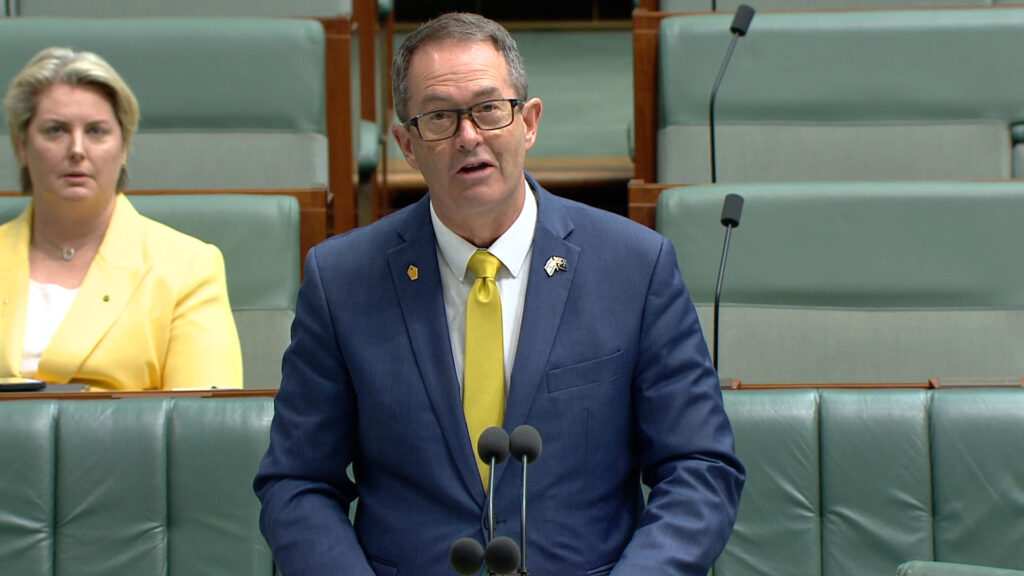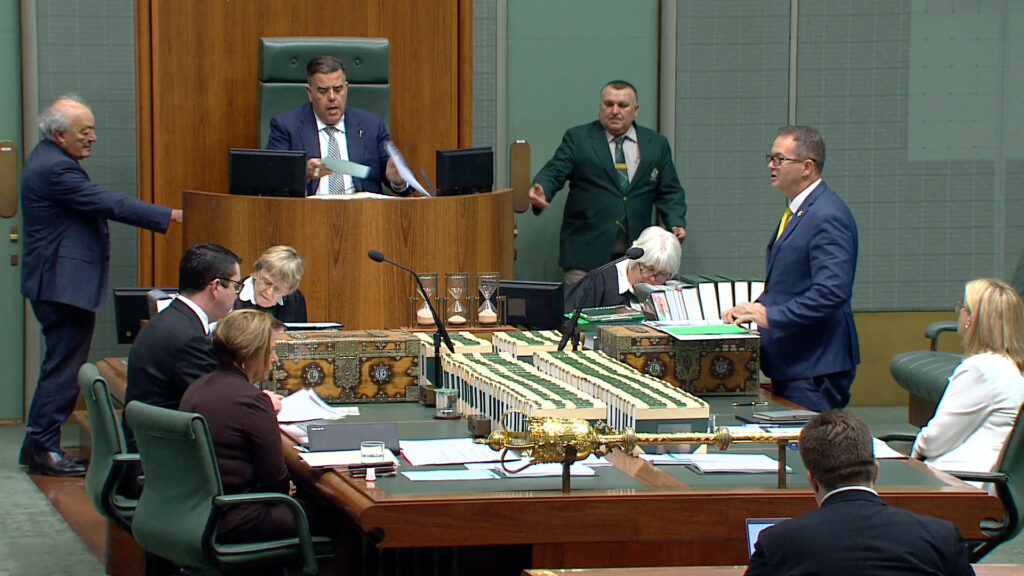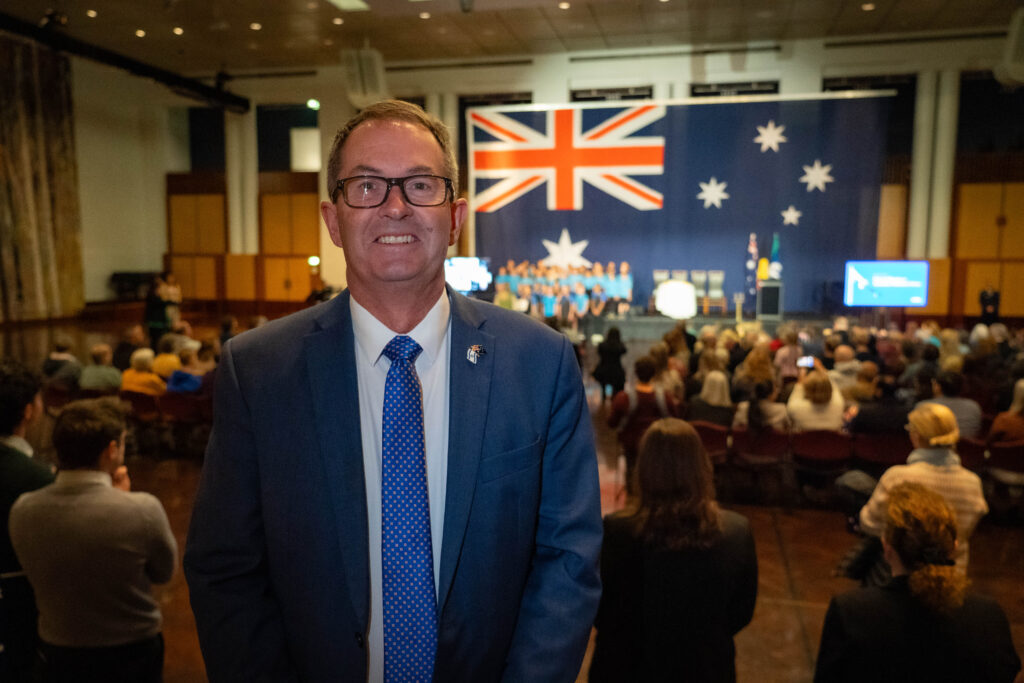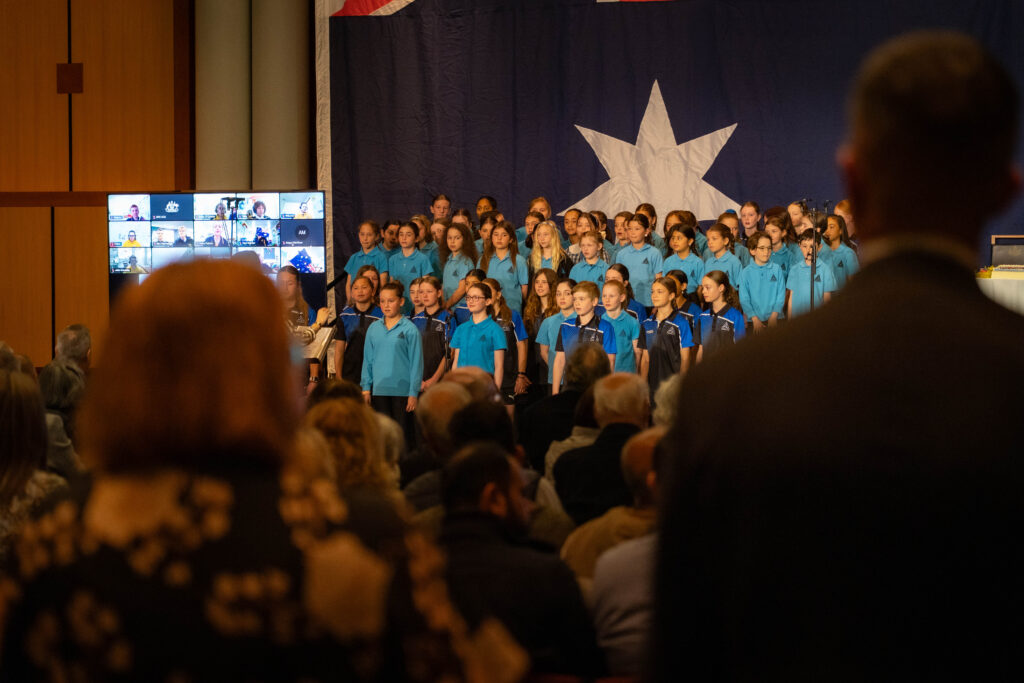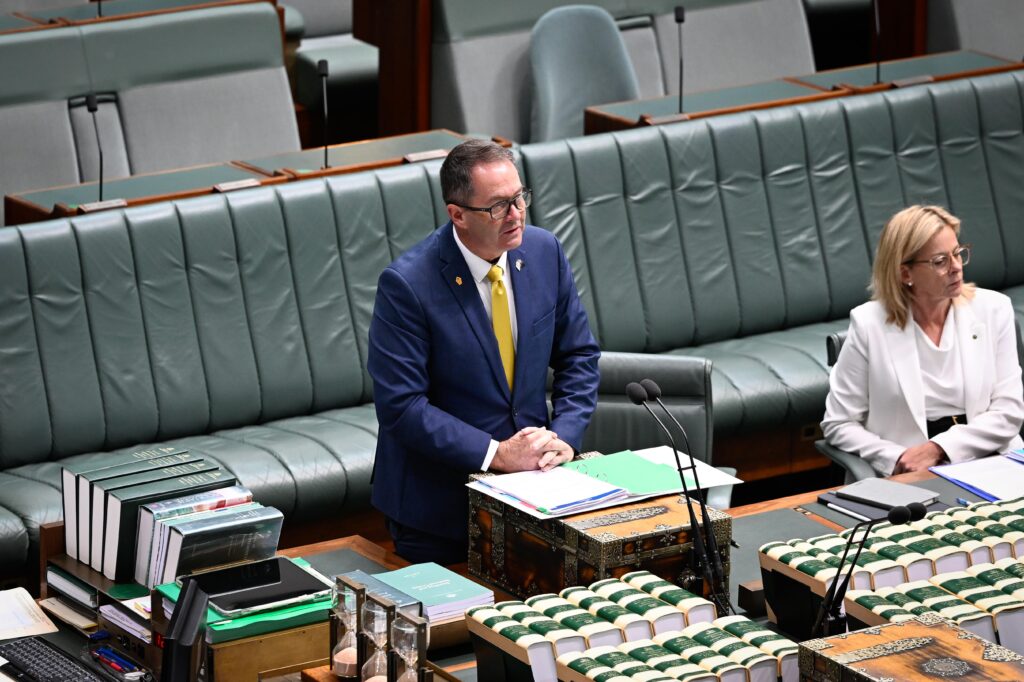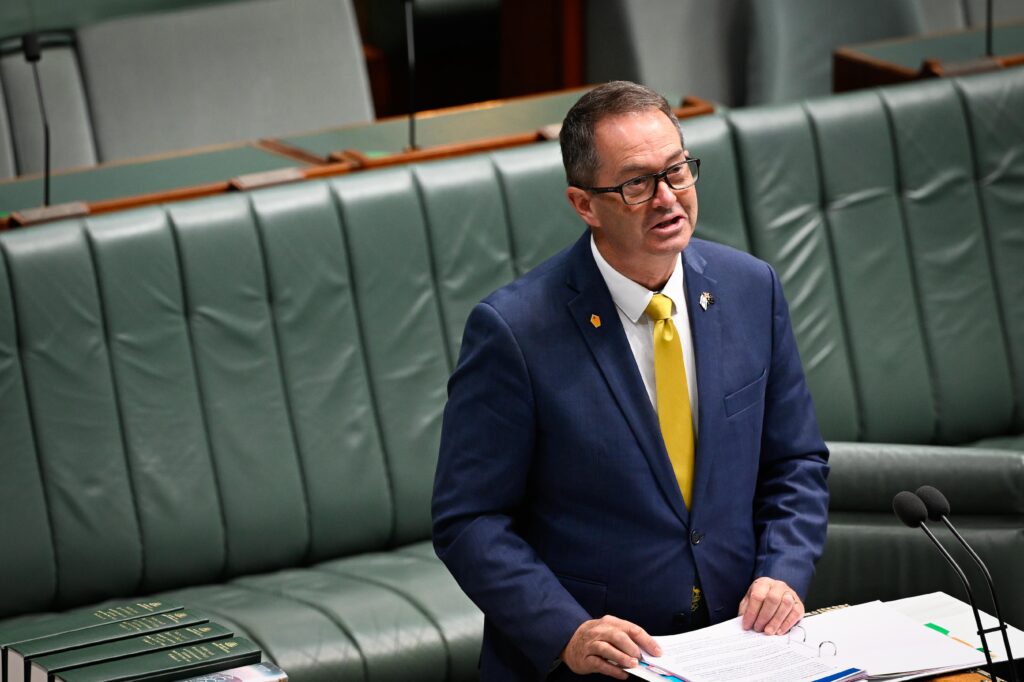House of Representatives Date: 3 September 2025
Speaker:
And to speak in response to the Assistant Minister’s statement, I give the call to the Member for Fisher.
Andrew Wallace MP:
Thanks, Mr Speaker, and I want to associate the Coalition with the fine speech of the Assistant Minister to the Prime Minister on our national flags and symbols.
Today, on the third of September, we mark the 124th birthday of the Australian National Flag. For me, this day is more than just a line in the diary. It’s personal. Only recently, I put up a flagpole at my home in Mooloolah, and now week in and week out, when I’m home, I see our flag flying proudly.
It grounds me. It reminds me of who we are as Australians, and of the values we share: pride, resilience, fairness and unity. Our national flag and all of our national symbols are not just objects, they are expressions of us. They capture our story, where we’ve come from, what we stand for, and where we hope to go.
The story of our flag begins in 1901, the year of Federation. To mark the birth of a new nation, the Commonwealth Government announced a public competition to design our flag. More than 32,000 entries were submitted from across the country, from professional designers, schoolchildren and everyday Australians. On the third of September, 1901, the winning design was flown for the very first time at the Exhibition Building in Melbourne.
It was, of course, our temporary Commonwealth Parliament House. The Prime Minister at the time, Edmund Barton, stood alongside Governor General Lord Hopetoun as the flag was raised, and just like that, our new nation had its most enduring symbol.
It is fitting that today we still mark that day, the third of September, as Australian National Flag Day, a day to remember not only the fabric itself, but the values and aspirations that are stitched into it.
Our flag tells its story through three great symbols. The Union Jack in the top corner is an acknowledgement of our British heritage and the constitutional foundations of our democracy. The bold Commonwealth Star, with seven points, represents the six states and the territories united under one Commonwealth. And finally, we have the Southern Cross. That celestial signature has guided navigators and inspired poets for centuries.
Some tourists may think it is just a fancy asterisk, but to Australians, it is unmistakable. A symbol that says: you’re in the Southern Hemisphere. Now mate, time to slap on a shirt, slip on a hat and slap on some sunscreen.
For generations, Australians have looked to the flag in times of triumph and in times of tragedy. It’s flown over Olympic gold medal ceremonies, and it has been lowered in grief after national disasters. It’s been stitched onto the shoulders of our defence personnel and raised above bases in far distant lands.
It flew over forward operating bases in Uruzgan Province in Afghanistan. It draped the coffins of our fallen servicemen and women who gave their lives in defence of this great nation. It was worn on the left sleeve of our peacekeepers in Somalia and Rwanda, just as it is today on Australians serving both abroad and in this country.
More than 103,000 Australians have paid the ultimate sacrifice for this country, and we must. It is our duty to remember them, not just on ANZAC Day, not just on the 11th of November, but on every day.
At home, it flies over RSLs and bowls clubs, over schools, homes and institutions right across this great country. When we honour and respect the flag, we honour those who came before us and the sacrifices they have made.
Of course, the flag is not alone. Australia is rich in national symbols, each one carrying its own story. The coat of arms with the kangaroo and emu, chosen because neither can walk backwards, symbolises a nation that always strives to move ahead.
The Southern Cross also features proudly on the crest of the Australian Army and on the crest of our national cricket team and other institutions, a reminder that wherever it appears, it represents us, gathered under one banner as Australians.
The golden wattle, our national floral emblem, hardy, vibrant and uniquely Australian, bursts into bloom every September, just in time for Flag Day. It was Andrew Fisher, my electorate’s namesake, who in 1912 placed the wattle on the national coat of arms, declaring it emblematic of Australia.
Wattle Day was officially proclaimed in 1992, though Australians had been celebrating it since 1910. The golden wattle is a perfect metaphor for our nation: resilient, radiant and capable of renewal after hardship. And here’s a fun fact: Australia is home to 1,076 different species of native wattle.
Our national colours, green and gold, are worn by our athletes on the world stage. I wish I could say I was an athlete. They’re worn by schoolchildren in assemblies and by everyday Australians when they cheer on the baggy green or our Wallabies.
Our national anthem, Advance Australia Fair, may not always be sung in perfect tune, but its words carry our aspirations for courage, for fairness and for freedom.
Another enduring symbol is the crown. It remains an important source of strength and legitimacy for our frontline services: the Australian Defence Force, the Australian Federal Police, the Australian Border Force and many others. It was wonderful to see the crowns recently updated across our defence force insignia to acknowledge His Majesty King Charles III.
And our honours and awards system, from the Order of Australia to the medals that are worn on ANZAC Day, remind us of service, sacrifice and achievement.
But Mr Deputy Speaker, not all of our symbols are official or formal. Many are cultural, everyday and uniquely Australian: a hot meat pie at the footy, an Akubra hat in the paddock, a pair of RM Williams boots that can last a lifetime, Blundstones that have been worn on farms, on work sites and on dance floors.
A Sherrin football being kicked in the backyard and at the MCG. A lamington with coconut flakes that stick to your fingers and your teeth. Thongs that slap against the pavement in summer or bust and get repaired with a bread clip, can’t say I’ve ever done that.
A pavlova that sparks arguments with our Kiwi cousins. The Southern Cross windmill standing tall in the outback and on the coast, on the best coast and the second best coast.
Nothing is more symbolic than the red and yellow lifesaving flags flown by our surf lifesavers on beaches and worn on their heads in Fisher and right across our great country. Those flags are not just markers of safety, they are markers of service, community and trust.
When you look at the motto of Surf Life Saving Australia, it is “Vigilance and Service”.
Together, the official and the unofficial symbols capture who we are as Australians: serious when we need to be, relaxed when we can be, but always proud of the story we share.
One of the greatest privileges I have as a Member of Parliament is presenting our national symbols to others, whether it’s a flag to a school, a certificate to a community organisation or an award to a local volunteer. I do not just hand them over, I share the story behind them with pride.
Often, I will even challenge teachers and students on their knowledge of the flag’s history, sparking conversations and sometimes a little bit of friendly banter. But it always reminds people that these symbols are not abstract. They are lived, they are loved, and they mean something.
I want to acknowledge the outstanding work by the Speaker of this House who, through his National Flag Roadshow program, has taken our national symbol out into communities across this country. It is a program that complements what so many of us do locally, bringing the flag and the stories behind it directly to the people.
Deserving real credit for those initiatives, I’ve seen children’s faces light up as they receive their first flag for their school. I’ve watched surf clubs and veterans groups hold their flags with pride. I’ve seen volunteers move to tears when they receive an award carrying the symbols of our nation.
That is the power of symbols in action. They unite us, they inspire us, and they remind us of the privilege of being Australian.
Now I know that sometimes symbols stir debate. Australians are not afraid of a good argument, especially if it comes with a sausage sizzle. There have been conversations about our flag, about our anthem, about what best represents our modern nation.
But those debates are not signs of weakness. They are signs of strength. They show that we care deeply about our identity, that we are willing to wrestle with it in the open. That is the beauty of our democracy.
Yet for all the arguments, one thing remains true: our symbols, and especially our flag, belong to all of us. Not to one party, not to one region, not to one generation. They are shared. Whether you were born here, arrived here, or decided to stay after a gap year, the flag is yours.
Today is more than a commemoration. It is about unity and hope. Unity in remembering that we are one people bound by a common story. A story that began with First Nations peoples more than 65,000 years ago, stretches through Federation and continues in the rich, multicultural society that we share today.
What unites us as Australians will always be stronger than what divides us.
Hope in believing that each time we raise the flag, we raise our expectations of ourselves: to live with fairness, to uphold freedom, to extend opportunity, to stand firm against adversity and to look to the future with confidence.
So Mr Deputy Speaker, in conclusion, today on National Flag Day, let’s not mark 124 years of history alone. Let us celebrate the meaning of our symbols now. Let us fly the flag with pride. Let us teach our children not only what it is, but why it matters so much.
Let’s cherish the wattle, the coat of arms, the green and gold, our anthem and our awards, and our Indigenous history. Let us celebrate the meat pies, the Akubras, the boots, the footies, the lamingtons, the thongs, the pavlovas, the windmills, the lifesaving flags, because together, they tell the story of who we are.
Flags may flutter in the wind, but the values they represent, freedom, mateship, resilience, fairness and a good sense of humour, stand firm.
On behalf of the Coalition, I’m proud today to say that our symbols matter. They always will. They remind us not only of where we’ve been, but of the brighter future that we build together.
Thank you, Mr Deputy Speaker, and to the Assistant Minister to the Prime Minister for this opportunity today.
Deputy Speaker:
I thank the Member for Fisher.
END
Media Contact: Brendan West – 0402 556 646 – Brendan.west@aph.gov.au
